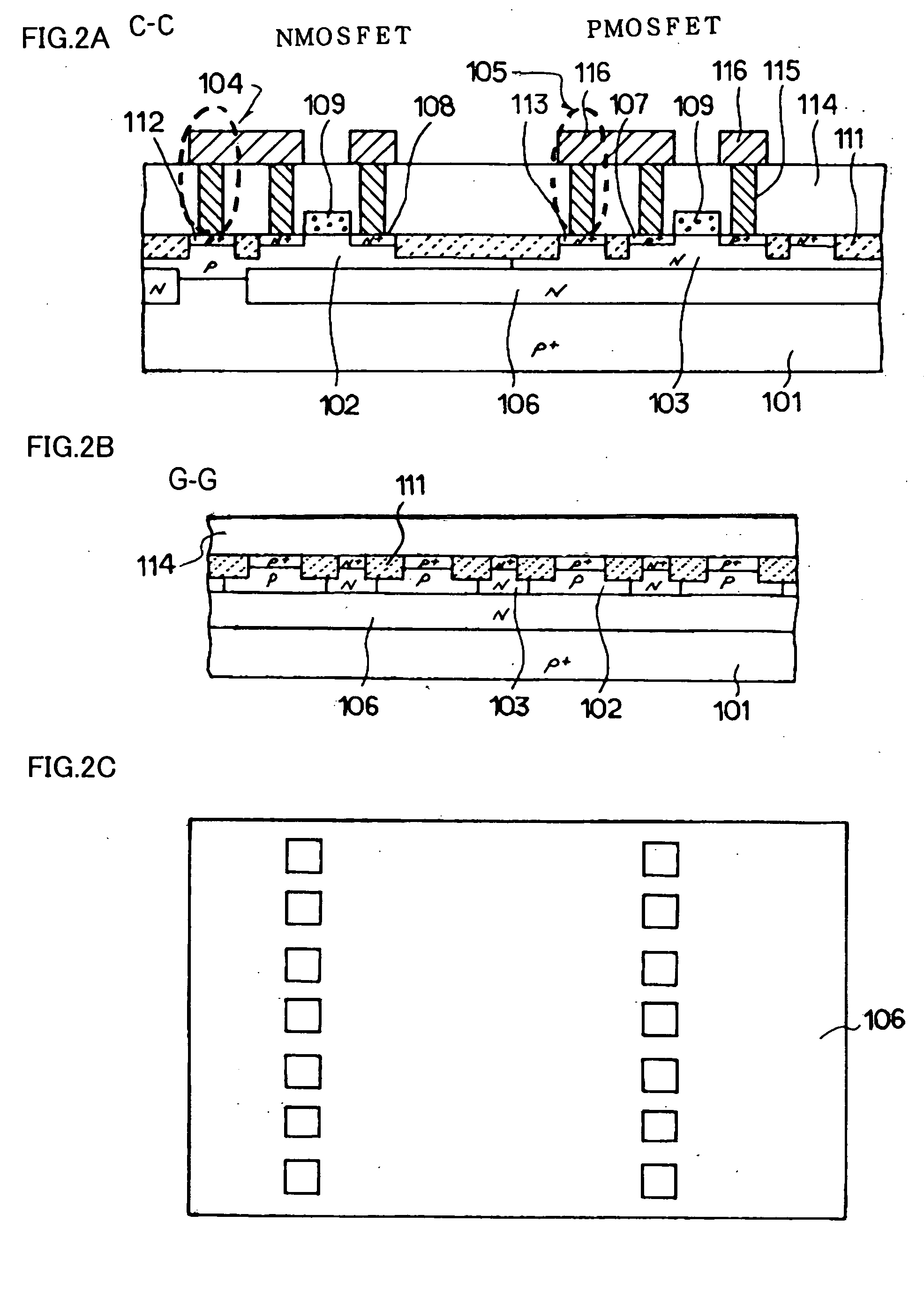Semiconductor device and semiconductor integrated circuit device
a semiconductor integrated circuit and semiconductor technology, applied in the direction of semiconductor devices, electrical devices, transistors, etc., can solve the problems of insufficient constitution in view of latch-up resistance, soft-error resistance, and information accumulated in the diffusion layer of the node, etc., to achieve the effect of improving the soft-error resistance and the latch-up resistance, and improving the latch-up resistan
- Summary
- Abstract
- Description
- Claims
- Application Information
AI Technical Summary
Benefits of technology
Problems solved by technology
Method used
Image
Examples
first embodiment
[0030] Embodiments of the present invention will be described as follows, in reference with the annexed figures. FIG. 1A is a schematic plan view of a cell array comprising a plurality of CMOS type SRAM cells. FIG. 1B and FIG. 1C are cross-sectional views cut along line A-A and line B-B of FIG. 1A, respectively. In FIG. 1A, a CMOS type SRAM cell portion includes a NMOSFET (N-channel type MOS field effect transistor), which is not shown and disposed in a region of a P well 102, and a PMOSFET (P-channel type MOS field effect transistor), which is not also shown and disposed in a region of a N well 103, and the PMOSFET and the NMOSFET are electrically coupled to form a memory cell “MC”. Here, since the configuration of the memory cell itself is identical to that having the circuit structure conventionally provided, the detailed description thereof is omitted. The aforementioned P wells 102 and N wells 103 are alternately disposed in a band-like manner to form one (1 bit) memory cell “M...
second embodiment
[0043] The present invention is not only applicable to the memory cells as illustrated in first embodiment, but can also be applicable to peripheral circuits of LSI (usual CMOS logic circuits). FIG. 7A is a plan view of the main part of the structure illustrated in second embodiment, in which the present invention is applied to the peripheral circuits, and FIG. 7B is a cross-sectional view of the structure shown in FIG. 7A along line D-D, and the same numeral number is assigned to the equivalent element appeared in first embodiment. NMOSFET and PMOSFET are formed in the P well 102 and the N well 103 formed in the P on P+ substrate 101, respectively. In addition, a buried N well 106 is provided in layer under the aforementioned P well 102 and N well 103 in the aforementioned P on P+ substrate 101. In addition, the P well electric potential junction 104 for providing the substrate electric potential of the NMOSFET, or in other words the predetermined electric potential of the P well 1...
PUM
 Login to View More
Login to View More Abstract
Description
Claims
Application Information
 Login to View More
Login to View More - R&D
- Intellectual Property
- Life Sciences
- Materials
- Tech Scout
- Unparalleled Data Quality
- Higher Quality Content
- 60% Fewer Hallucinations
Browse by: Latest US Patents, China's latest patents, Technical Efficacy Thesaurus, Application Domain, Technology Topic, Popular Technical Reports.
© 2025 PatSnap. All rights reserved.Legal|Privacy policy|Modern Slavery Act Transparency Statement|Sitemap|About US| Contact US: help@patsnap.com



